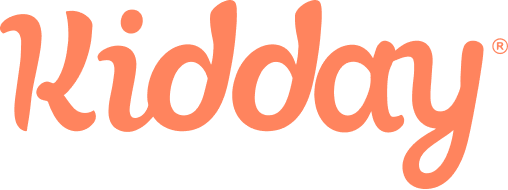In the era of social media, a new phenomenon has emerged, known as “sharenting.” This term, a blend of ‘sharing’ and ‘parenting’, refers to the practice of parents posting content about their children on social media platforms. While it allows for the celebration of a child’s milestones and the sharing of family memories, it raises significant concerns about the child’s right to privacy, consent, and the implications of early exposure to social media.
Understanding sharenting
Sharenting involves parents sharing photographs, stories, and information about their children on digital platforms, typically social media. This can range from occasional photo posts to detailed accounts of a child’s daily life. Initially, it may seem like a harmless way to keep family and friends updated, but the implications are more profound. Sharenting, in essence, creates a digital footprint for a child before they can consent or understand the consequences.
Possible consequences of sharenting
Creation of a digital footprint for children who are too young to give consent is a profound issue that parents must carefully consider.
- Long-term digital identity formation: When parents share their children’s information and images online, they are unknowingly shaping their digital identity. This digital footprint can persist and grow over time, potentially impacting the child’s future, including their social, educational, and professional opportunities.
- Privacy and security risks: A child’s digital footprint can be a source of privacy breaches and security risks. Information and photos shared online can be accessed, used, or misinterpreted by others, including potential predators or identity thieves. This can lead to unwanted attention or even endanger the child’s safety.
- Psychological impacts: Growing up with a pre-established online presence can affect a child’s sense of self and privacy. They may feel that their personal experiences and milestones are not their own, but rather a narrative crafted and controlled by someone else. This can lead to issues with self-esteem and individuality.
- Unintended future consequences: The content shared by parents today might be perceived differently in the future. What seems adorable or harmless now could become a source of embarrassment or misunderstanding for the child in their adolescent or adult years.
- Consent and autonomy issues: Since children cannot consent to having their images and information shared online, they are denied a choice in their digital presence. As they grow older, they might resent or disagree with the digital persona that has been created for them, leading to conflicts or a sense of violation of their personal space.
- Legal and ethical considerations: The act of sharenting without consent touches upon legal and ethical concerns. It raises questions about a child’s rights to privacy and autonomy, and whether parents should have unrestricted freedom to shape their child’s digital legacy.
Respecting the child’s right to privacy
Central to the discussion of sharenting is the child’s right to privacy. This fundamental right plays a crucial role in their development and autonomy. When a child’s life is shared online without their consent, it can have significant implications on their sense of privacy and control over their personal information.
The need for a private space
Children, like adults, need a private space where they can grow, make mistakes, and develop without the prying eyes of an online audience. Sharing their lives online strips them of this privacy, exposing their personal experiences and milestones to a broader audience than necessary. This can lead to a feeling of constant surveillance and a lack of control over their own narratives.
Future desires for anonymity
As children grow into teenagers and adults, their desires and perspectives on privacy can change dramatically. What was once shared by parents might not align with the individual’s own sense of privacy. They may wish that certain aspects of their childhood, especially sensitive or embarrassing moments, were not in the public domain. This retrospective desire for anonymity highlights the importance of considering long-term impacts when sharing about a child’s life online.
Impact on social interactions
The information shared about a child can influence their social interactions. Peers or even strangers may form opinions or make judgments based on what they see online, leading to situations where the child feels their personal narrative has been prewritten by someone else. This can affect their social relationships and self-perception, as they might feel compelled to conform to the online persona created for them.
Potential for misuse
Information, photos and videos shared online can be misused. From being taken out of context to being used for nefarious purposes, the lack of control over shared content can lead to unforeseen consequences. Especially in the upcoming age of artificial intelligence, the risks associated with shared content escalate significantly. AI technologies have the capability to analyze, replicate, and manipulate personal data and images — or even videos — in ways previously unimaginable. This could lead to the creation of deepfakes or the misuse of a child’s likeness in various digital contexts without consent.
The importance of consent in sharenting
A child, especially in their early years, cannot give informed consent to have their images or information shared online. This raises ethical questions about autonomy and respect for the child’s future wishes. As they grow older, their views on privacy might differ significantly from what was shared about them in their early years. Therefore, obtaining consent becomes not just a one-time act but an ongoing conversation as the child matures.
Early use of social media and its impacts
Early exposure to social media, facilitated by sharenting, can have various effects on a child. It shapes their understanding of privacy, social interactions, and personal identity. Children may feel pressured to live up to the online persona created for them, affecting their self-esteem and identity development. Additionally, early exposure to social media norms can influence their future use of these platforms, potentially leading to issues like oversharing, reduced attention span, or an unhealthy need for online validation.
Alternatives to sharenting
Parent have a need to share their child’s life. While there are several ways to do so, all of them might not be as convenient and others have drawbacks in security and privacy. Those who are looking to share their child’s life milestones while respecting their privacy can consider alternatives like a family album. Digital platforms like Kidday offer a secure and private way to create a digital family album. Unlike public social media platforms, Kidday provides a controlled environment where content is shared only with selected family members. This approach respects the child’s privacy and reduces risks associated with social media exposure.
In conclusion, while sharenting offers a modern way to celebrate and share a child’s growth, it is crucial to balance this with their right to privacy and consent. Parents should be mindful of the long-term implications of their digital choices on their child’s identity and well-being. By opting for more controlled and private platforms like family albums, parents can preserve these precious memories without compromising their child’s privacy and autonomy.
 English
English Suomi
Suomi

2 comments